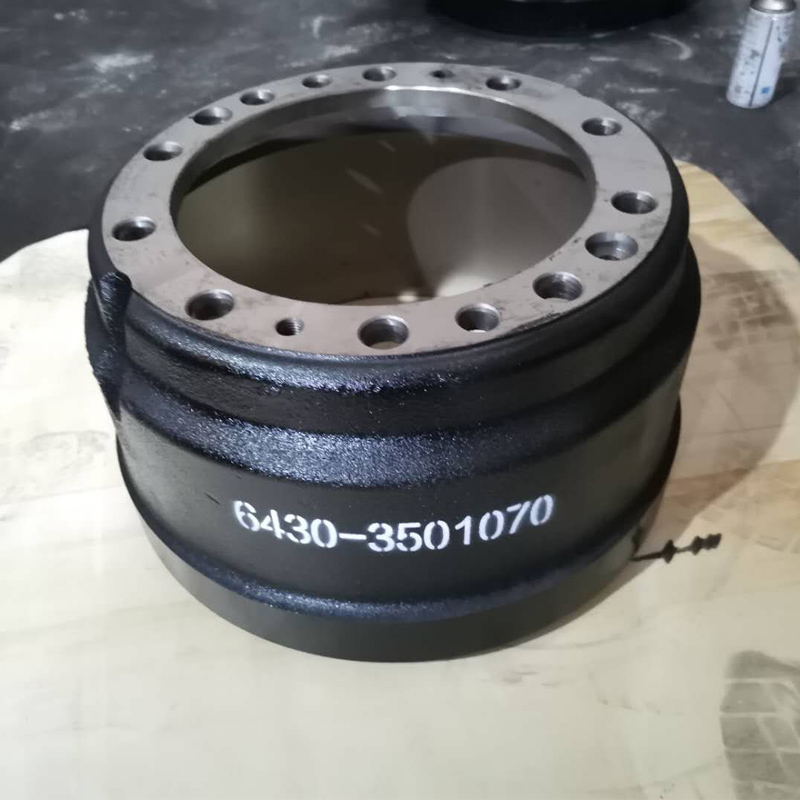Nov . 02, 2024 04:36 Back to list
what happens when brake drums get hot
What Happens When Brake Drums Get Hot?
Brake drums play a critical role in the braking systems of many vehicles, especially in older models and certain types of heavy-duty equipment. Understanding what happens when brake drums get hot is essential for maintaining vehicle safety and performance. When brakes are applied, friction is generated between the brake shoes and the drum, converting kinetic energy into thermal energy. This process inevitably leads to an increase in temperature, but excessive heat can lead to various problems.
First, it's essential to recognize how heat impacts brake performance. As the brake drums heat up, they can expand. This thermal expansion may cause the clearance between the brake shoes and the drum to change, potentially leading to reduced braking efficiency. When the brakes are applied multiple times in quick succession, such as during downhill driving or in heavy traffic, the temperature can rise rapidly. This phenomenon can lead to brake fade, where the effectiveness of the brakes diminishes due to the overheating of the components.
Another critical issue that arises from excessive heat in brake drums is the risk of deformation. High temperatures can cause brake drums to warp, which alters their shape. A warped drum can lead to an uneven surface, resulting in a pulsating feeling when brakes are applied. This not only compromises the vehicle's stopping power but can also lead to increased wear on brake pads and other components, leading to costly repairs.
what happens when brake drums get hot

Moreover, when brake drums reach extreme temperatures, they can cause the brake fluid to boil. Brake fluid is designed to operate within a specific temperature range, and boiling can create vapor bubbles, limiting the hydraulic force needed for braking. This condition, known as vapor lock, can result in a complete loss of braking ability, posing serious safety risks.
In addition to performance issues, excessive heat can further accelerate wear on brake components. Brake pads can deteriorate more quickly when subjected to high temperatures. This degradation generates more debris and can lead to increased frequency in brake maintenance or replacements. The overheating can also cause the lining material of the brake shoes to glaze over, reducing friction and thus diminishing braking effectiveness.
To mitigate the impacts of heat on brake drums, vehicle operators should adhere to maintenance schedules, which include regular inspections of the braking system. Signs of brake problems, such as unusual noises, decreased responsiveness, or vibrations, should be addressed immediately. Additionally, using appropriate braking techniques can help minimize overheating. For instance, avoiding constant heavy braking and utilizing engine braking whenever possible can be beneficial.
In conclusion, while brake drums are designed to withstand significant amounts of heat generated during braking, excessive temperatures can lead to various problems, including reduced performance, warping, vapor lock, and accelerated wear and tear. Vehicle safety relies heavily on the effective functioning of the braking system, making it crucial for operators to be vigilant and proactive in their maintenance practices. Understanding what happens when brake drums get hot not only promotes better vehicle performance but also enhances overall safety on the road.
-
Scania Brake Drums: OEM Quality for Optimal Safety & Durability
NewsAug.16,2025
-
R.V.I: Advanced Remote Visual Inspection for Precision
NewsAug.15,2025
-
Discover HYUNDA: Innovative Vehicles, Equipment & Solutions
NewsAug.14,2025
-
R.V.I: Unlock Advanced Insights & Real-time Performance
NewsAug.13,2025
-
Kamaz Brake Drum: Durable & Reliable for Heavy Duty Trucks
NewsAug.12,2025
-
Heavy Duty Iveco Brake Drum - Premium Quality & Safety
NewsAug.11,2025
